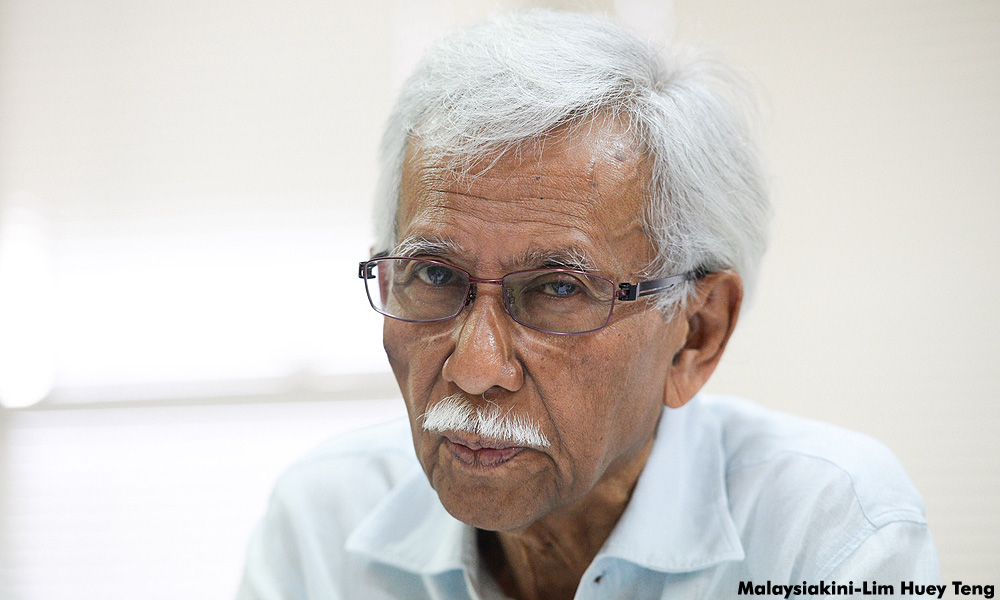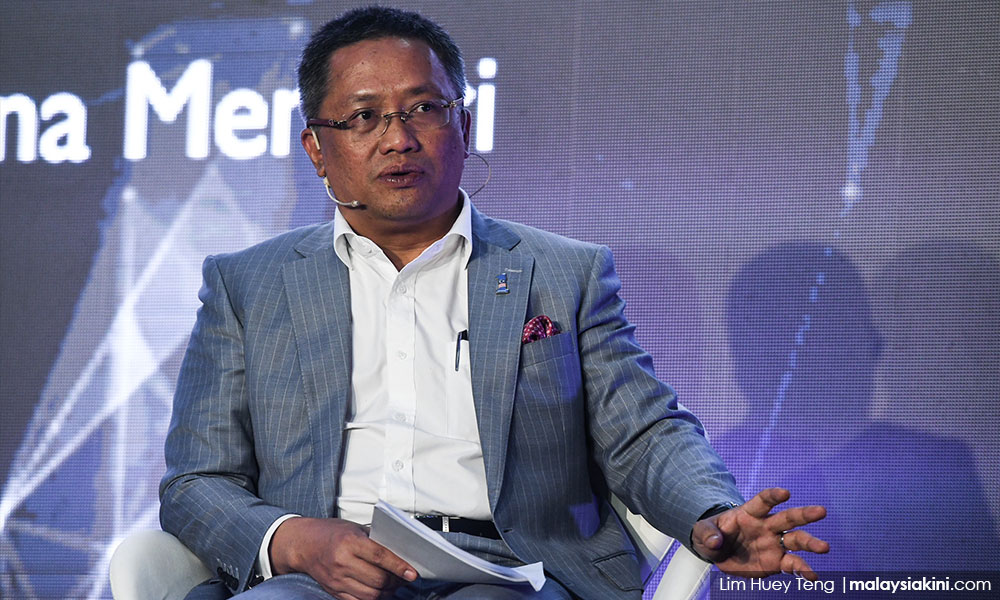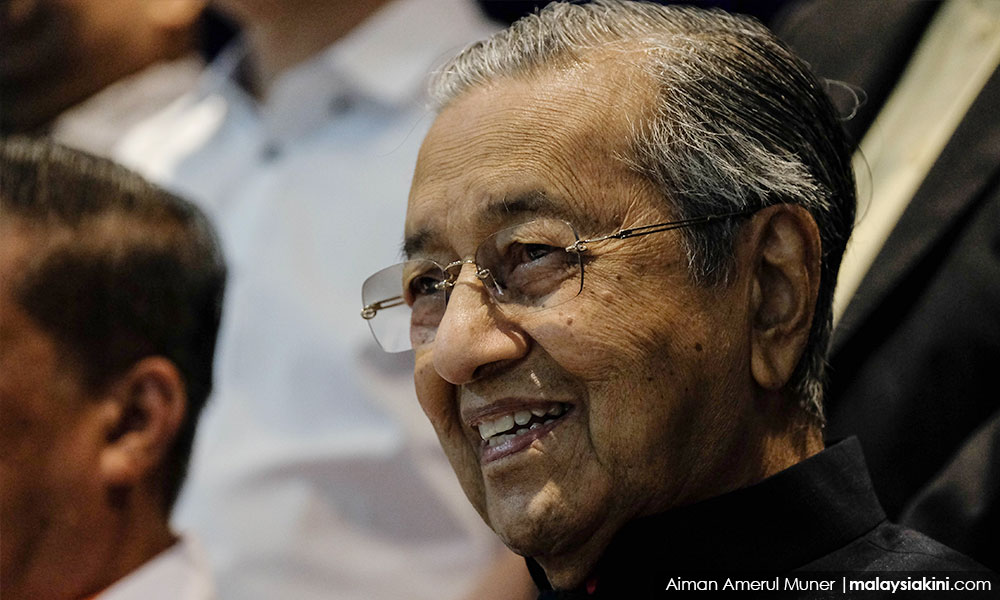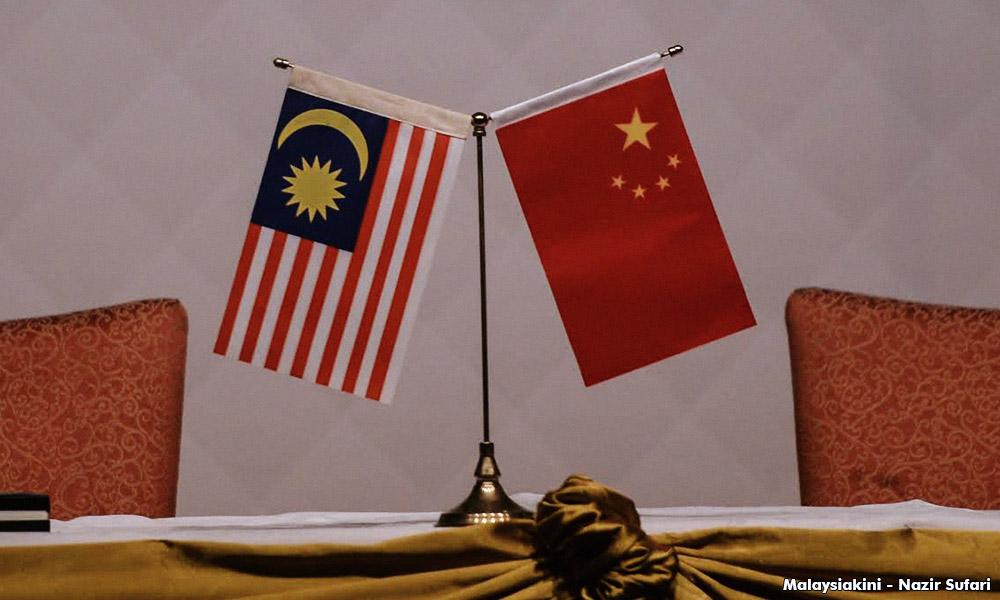LETTER | I make reference to minister Abdul Rahman Dahlan’s response to former finance minister Daim Zainuddin with regards to the funding of the East Coast Rail Link (ECRL) project.
Honestly, I don’t know what scares me more – the thought of being under China’s economic thumb, or the justifications trotted out by the minister in charge of the Economic Planning Unit (EPU).

Daim was merely seeking clarification, given that where the ERCL is concerned, the terms “foreign direct investment” (FDI) and “long-term loan” have been used interchangeably since the idea was first mooted.
This “confusion” was not confined to Pakatan Harapan, but also analysts and the global financial sector, based on the representations made by those closest to the project.
Hence, being a responsible coalition, clarification was sought so risks can be adequately assessed and the correct representation made. Rahman oversees the EPU, so he should know this logic and should have responded professionally.
Now let’s get back to the funding issue of ECRL.
This year’s budget made such big drama out of domestic private investment being the key driver of economic growth, particularly for key development and infrastructure projects.
At the time, I wondered what exactly the government meant by domestic private investment. Now I understand it.
In the early days, when Rahman was still learning the ropes as a university student, Dr Mahathir Mohamad was figuring out the best way to raise funds for development projects in the country.

Considering the country was still young, with little reserves or income to fund such projects, the only options were to either attract foreign direct investment or take loans from global development agencies at favourable terms (as we were deemed still developing and eligible for assistance).
The decision to favour FDI was made in order to balance our accounts so that we do not take on too much debt by funding everything through loans – a concern the current regime doesn’t seem to give two hoots about.
Furthermore, in those days FDIs were all greenfield because the objective was long-term capital development and long-term growth. And Mahathir was smart enough not to get hoodwinked by obscure terms in FDI agreements either. Greenfield FDI was a win-win situation.
Compare the situation then and now. Understandably, even without the threat from China to our sovereignty, the method of funding should have been changed.
Why? Because we have reserves to fund some development ourselves, while those loans we used to get at close to zero percent are no longer available to us as an industrialising economy, and our financial system is strong enough to provide domestic investments. This is strategic management 101, a no-brainer.
Both approaches have their risks. For this current regime to go on record to say by merely taking this long-term loan from China, and retaining 100 percent ownership of the project, will ensure we retain our sovereignty while mitigating the foreign exchange risk – which Rahman stresses to highlight Mahathir’s apparently poor foreign exchange track record – speaks of bad strategic and risk management, at best.

Perhaps Rahman should read up on what happened in the case of Sri Lanka’s port in Hambantota. As a result of the inability to service their loans to China, Sri Lanka had to give up equity share, effectively handing over control of the port to the country.
In case Rahman doesn’t realise, this was a loan given without due regard to feasibility and predictably that went into default. No FDI there. Apparently, merely owning a project in debt is not sufficient to protect one’s sovereignty.
The concerns over ECRL remain basic concerns.
Firstly, merely stating the ECRL will be a catalyst for socio-economic growth in tandem with the East Coast Economic Corridor shows lack of forethought as to the challenges facing the ECER, which will also likely impede the objectives of the ECRL. This, in turn, impacts the feasibility and viability of the ECRL project, thus also the financial targets and risks, hence a higher risk of loan default.
Furthermore, if the project is undertaken as a domestic investment and not FDI – whether greenfield or not – and considering China will play the role of funder, developer and project manager with exclusive control over resources and deployment, then what direct benefit will the project provide to locals, other than a short-term capital gain over sale of land to the consortium?
Foreseeably, there may not be a spillover effect to the GDP, as such projects typically would. Let’s not even talk about the transfer of technology and skills such projects typically deliver.

Instead, the massive loan from China will significantly increase the government’s contingent liabilities, which are already considerable due to 1MDB and stands at a double-digit percentage of the national expenditure. The inflow of funds will at best only support the demand for the ringgit, but not deliver GDP growth as the construction contract awarded to China becomes a service import and subtracts from headline GDP growth and the ringgit demand.
The term for 40 percent of the project to be paid in ringgit may be what Rahman alludes to as managing foreign exchange risk, but this is simplistic given the long-term nature of the project and the millions of variables to it.
And these are the questions on everyone’s minds. How will the government, led by the EPU and the Public-Private Partnership Unit, structure this mega project such that it enhances and guarantees the country’s financial position, social wellbeing, future growth, and most of all, our sovereignty without further burdening the rakyat?
The views expressed here are those of the author/contributor and do not necessarily represent the views of Malaysiakini.

